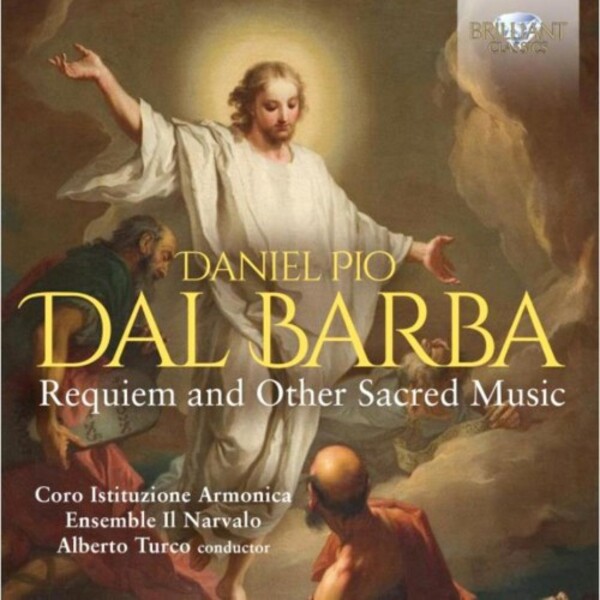
Dal Barba - Requiem and Other Sacred Music
£9.45
In stock - available for despatch within 1 working day
Despatch Information
This despatch estimate is based on information from both our own stock and the UK supplier's stock.
If ordering multiple items, we will aim to send everything together so the longest despatch estimate will apply to the complete order.
If you would rather receive certain items more quickly, please place them on a separate order.
If any unexpected delays occur, we will keep you informed of progress via email and not allow other items on the order to be held up.
If you would prefer to receive everything together regardless of any delay, please let us know via email.
Pre-orders will be despatched as close as possible to the release date.
Label: Brilliant Classics
Cat No: 96189
Format: CD
Number of Discs: 1
Genre: Vocal/Choral
Release Date: 7th October 2022
Contents
Artists
Coro Istituzione ArmonicaEnsemble Il Narvalo
Conductor
Alberto TurcoWorks
Gloria in F majorMessa da morto breve in G minor
Te Deum in G major
Artists
Coro Istituzione ArmonicaEnsemble Il Narvalo
Conductor
Alberto TurcoAbout
Dal Barba’s Messa da morto breve, or ‘Short Requiem Mass’, dates from 1779. The central text of the introit (‘Te decet hymnus, Deus in Sion’; ‘Praise to you, o God in Zion’) comprises an extract from Psalm 64 (verses 2–5) and is entrusted by Dal Barba to the solo soprano and bass, whilst the antiphon is sung by the chorus. The invocations of the Kyrie are given three distinct musical forms: a chorus with cantabile melodic lines, a duet in triple metre, and finally a fugue, with a theme that recalls the one Mozart used in the Kyrie of his Requiem K626, composed over ten years later. The most substantial part of Dal Barba’s Messa da morto breve is the Dies irae.
Dal Barba divides the sequentia, the hymn text sung between the Epistle and Gospel readings, into three solo arias, and three where the chorus takes centre stage. The three chorus sections of the Dies irae start with a motif recalling the corresponding Gregorian theme. Throughout the complex Latin text, the chorus alternates between isorhythmic passages and imitative sections, with a style comprising simple melodic lines and recurring harmonies, culminating in the cadence of the Amen. The Messa da morto breve concludes with the Libera me, a long responsory used to say farewell to the body. It is interesting to note that the atmosphere generated by the minor keys (G minor and C minor) is continuously interrupted by the key of E flat major, which Dal Barba uses to emphasise the text ‘Requiem aeterna’ and to pre-empt the ‘serenity’ that appears following the conclusion of the final cadence, symbolising believers’ hope for resurrection.
The Gloria is a miniature cantata for three-voice chorus and soloists, divided up into the typical nine sections, a model which was used by many other European composers, including J.S. Bach. The Te Deum was, and still is, listened to as a hymn of thanks at the end of the year, and it was frequently sung to avert natural disasters or war. In Dal Barba’s Te Deum, various solos are interwoven with the sections of text entrusted to the chorus, and the final section returns to some of the harmonic and melodic ideas used in the opening of the work.
Error on this page? Let us know here
Need more information on this product? Click here